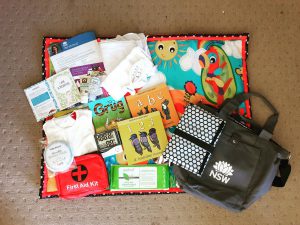Did you know that January 30th is National Leprosy Day?
Why?
World Leprosy Day is observed on the last Sunday of January each year. Established in 1954 by French philanthropist Raoul Follereau, it aims to raise awareness about leprosy (now called Hansen’s disease) and teach people about this ancient disease that is easily curable today.
Given the way Polio Eradication has been given a loud shout, not many people realise that leprosy is also a great challenge for medical healthcare in India. Though by 2005 India is officially known to have eradicated leprosy by reducing its prevalence from 10,000 people to just 0.72% rate. India has the world’s largest drive against leprosy. However, even today it is estimated that 120,000 to 130,0000 people are still affected. Even though it is not a highly contagious disease and most people are resistant to it, complete eradication is still not achieved.
This is because people don’t go to the doctors for the fear of losing wages and brush off the initial symptoms. However, once the disease progresses it is irreversible. Therefore it is important that people realise the need for medical intervention at the onset. With a combination of multi-drug therapy, it is possible to kill the pathogen completely. If not treated on time it can have debilitating effects on the body thereby discrimination due to disfigurement leads to shunning of the people suffering from the disease.
National Leprosy Control Programme (NLCP) was launched by the Govt. of India in 1954- 55. Multi Drug Therapy (MDT) came into wide use from 1982, and the National Leprosy Eradication Programme was introduced in 1983. The strategy of NLEP was based on controlling the disease through reduction in the quantum of infection in the population and reduction in infective source, thus breaking the chain of disease transmission.
(Source: https://dghs.gov.in/content/1349_3_NationalLeprosyEradicationProgramme.aspx)
If you are having lower income people around you who fear doctor’s wages like maids, servants, gatekeepers, security persons or any such people in your immediate location; it is important that they have idea about preventive measures. Initially it looks like insect bites or allergic reactions but this should not be ignored. Prevention and medical intervention is the first step. WHO provides multi-drug treatment free of cost for patients in India so as to enable the eradication of the disease. One can avail of more details about the treatment that extends from around 6 to 12 months (depending on the impact of the disease).
One of the most important aspects of leprosy is the myths and misconceptions.
- Leprosy is curable. It is the delay in getting treatment that can affect the body.
- Leprosy in the ancient and traditional texts are different from what it is today
- The fingers and toes don’t fall off. The disease leads to numbing due to the attack on the skin and then the nervous system
- Isolation is not necessary if the patient is taking medication and antibiotics
- Leprosy cannot be got by casual contact
- As in every treatment measure, one must ensure that the patient is taken proper care of and it is not contagious especially when medication is on. What’s important is that the medication must continue for the whole course and not leave midway.
If these aspects are kept in mind, one can completely eradicate leprosy and also educate people towards betterment. A healthy community means better living standards for everyone.



